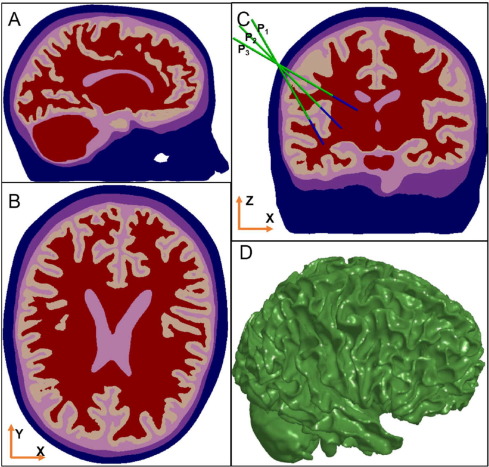Cryoablation has been demonstrated powerful in treating of a variety of diseases, especially for the tumor ablation, which destroys the target tissue through the controlled freezing of cryoprobe. The prediction of temperature evolution during cryoablation is of great importance for developing and improving clinical procedure. This paper presented an efficient thermal model to characterize the freezing effect of cryoprobe with arbitrary layout including its size, orientation and number. The key step of the presented model is to establish a boundary heat source method to implicitly characterize the heat transfer from cryoprobe with fixed temperature or convective heat transfer boundary condition, which is furthermore incorporated to a fast parallel alternating direction explicit (PADE) finite difference method for computation acceleration. A novel dynamical and conformal computational region is designed through the shortest distance definition to balance the thermal effect of tissue and computational efficiency. The detailed test cases including a real head tissue demonstrated that the current model can accurately predict the temperature field evolution induced by arbitrary multi-cryoprobe configuration, and achieve significant computational ability due to allowable large time step (100-fold compared with the explicit finite difference method), compact computational region (at least reducing 40% number of voxels) and high parallel efficiency (speedup ratio about 8 for 12 threads) for complex tissue structure. Cryobiology, 2015 
The realistic head model composed of five different tissue types (white matter, gray matter, cerebrospinal fluid, skull and muscle): (A) sagittal plane, (B) transverse plane, (C) sagittal plane view of the head, and (D) surface structure of the white matter. The cryoprobe position is illustrated in (C). |

